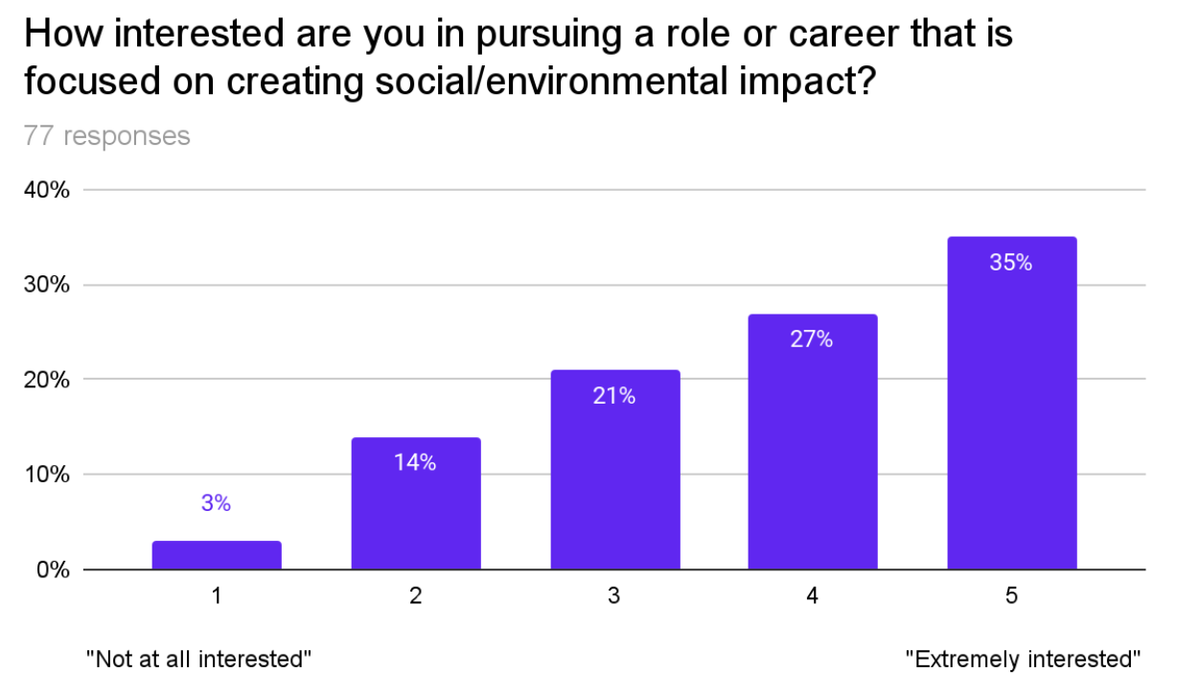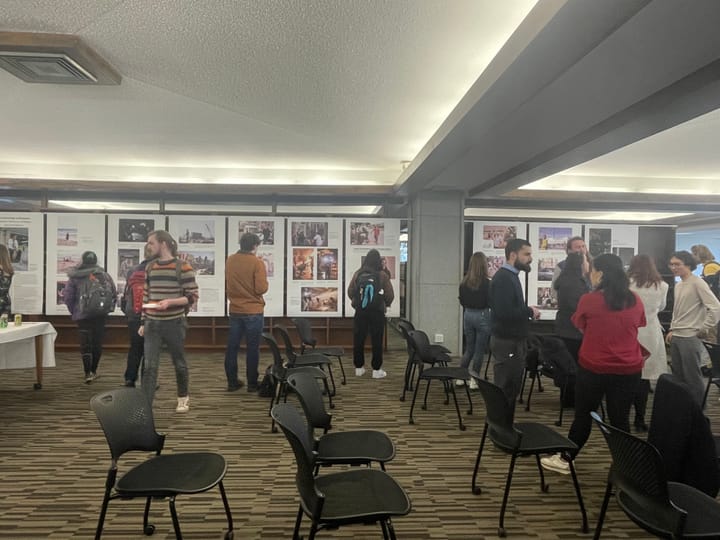A Better Amherst: Careers of Consequence
Contributing writers Charles Sutherby ’23E and Mason Quintero ’23 discuss the ways in which Amherst fails graduates pursuing public service, in the second of a three-part series for The Student.

This op-ed is the second part of a three-week series entitled “A Better Amherst.” In this series, we examine the inadequacy of Amherst’s support for students interested in impactful work and careers, and we propose a set of solutions that would make Amherst better for both its students and the world.
“Amherst College educates students of exceptional potential from all backgrounds so that they may … lead principled lives of consequence.” - Mission of Amherst College
From the moment that Ben Gilsdorf ’21 arrived on campus, he knew he wanted to pursue a career in public service. He felt like he did all the right things at Amherst — he took the “right” classes, he did the “right” extracurriculars, he landed the “right” internships. But despite his best efforts, Gilsdorf’s transition into a public service career after graduation was anything but seamless.
After a few fruitless encounters with the Loeb Center, Gilsdorf learned to expect little help from Amherst in the pursuit of a public service career. He graduated without a job lined up, and moved to D.C. in hopes of finding work in the public sector. In the months that followed, Gilsdorf submitted over 90 job applications for politics, policy, nonprofits, and think tank positions with no luck. Most jobs never got back to him. For two months, he worked at Trader Joe’s to pay rent. Finally, by sheer perseverance, he landed a job in public service in November — half a year after graduating. Gilsdorf’s experience is not anomalous; it’s emblematic. In his words, “this is a typical story” among students pursuing public service work from Amherst College.
Amherst does not adequately support students who want to pursue impactful work. While it heavily facilitates entry into finance and consulting, Amherst leaves service-minded students like Gilsdorf to fend almost entirely for themselves. Students seeking public service careers discover that Amherst’s resources are, in Gilsdorf’s words, “out-of-touch and unprepared to deal with the way the industry works.” As we demonstrated in our last article, Gilsdorf’s alarming experience is reflected in the data: Amherst is one of the worst elite liberal arts colleges in the country at sending graduates into public service. But are postgrad outcomes even Amherst’s responsibility? And, if they are, how can Amherst better support its students?
First, let’s establish some common terminology. The Aspen Institute defines an “impact organization” as one "striving to achieve an explicit social [or environmental] mission; these organizations can range from community-based nonprofits to B-corporations to large government agencies or private businesses.” An impact career is “any role served within an impact organization.”
Some might assume that few Amherst graduates pursue impact careers because few students are actually interested in such work. But recent data would suggest otherwise. Last week, we conducted a survey of Amherst students via the campus-wide Groupme to measure student interest in impact careers.
While these 77 respondents are not necessarily representative of the student body, the results certainly provide an illuminating pulse check of Amherst students. Among those polled, 62 percent of respondents were in the top two categories of interest in pursuing a role or career that focuses on creating social or environmental impact. Overall, these students overwhelmingly expressed interest in impact careers. And I would imagine these results aren’t surprising: in my experience at Amherst, I’ve felt surrounded by students who care deeply about social justice, about climate change, and about improving the world. Thus, improving Amherst’s impact career outcomes isn’t a matter of convincing more students to care — it’s about improving institutional support.
To solve this problem, the college must start by taking responsibility. Amherst must recognize that it is the essential hub between students and careers — students learn what jobs are available, accessible, and desirable almost exclusively through the institutional and social structures of this college. While some might object that we shouldn’t be influencing students to pursue particular careers, the reality is that we already are: Amherst powerfully facilitates the entry of its students into high-wealth jobs. Students seeking to make a difference in the world deserve the same sort of help.
Finding impact careers at Amherst College is far more difficult than it should be. Peer institutions like Swarthmore, Smith, and Grinnell College (three of the best colleges in the country at producing public service graduates) highlight the lack of Amherst’s support. But they also demonstrate that our situation is not inevitable. Better yet, these institutions offer a blueprint for how to create pathways into impact careers. Based on the examples of these model institutions, here’s how Amherst can solve its problem.
Dramatically increase the visibility of impact career pathways. Expand the number of structured opportunities for students to learn about impact careers, like information sessions or alumni visits specifically in the impact space. For example, imagine if Amherst hosted annual impact-themed alumni panels: one devoted entirely to environmental careers, another for government and policy, another for nonprofits, another for social work, and so on.
Take a proactive role in the recruitment process. Public and social sector organizations struggle to find top talent. So Amherst should help them find us, by developing partnerships with employers and organizing recruiting events. Imagine if Amherst hosted an annual “Social and Environmental Impact Hiring Cluster” where a dozen impact organizations come to campus to interview students: racial justice nonprofits, progressive policy think tanks, climate tech start-ups, city government offices, and B Corporations, all at once. For a great example of proactive recruitment, see Harvard University’s Center for Public Service and Engaged Scholarship.
Financially support students after graduation. The public sector often doesn’t pay very well, a point which is particularly salient for students from low-income backgrounds. So, Amherst should kickstart the careers of interested students by creating postgraduate fellowships and grants for students pursuing impactful work. Swarthmore College already offers Social Impact Fellowships ($27,000 per student); other colleges provide graduates with housing for their first year working at a nonprofit.
Fully integrate career advising. Career advising shouldn’t be opt-in: such a model disadvantages FLI students who may find it harder to get engaged with career services. Instead, every student should be given a career and/or life advisor just like every student is given an academic advisor. Amherst should be a space where we think critically about our place in the world, and it ought to provide structured opportunities for us to do so.
Amherst is a world-class institution of higher education. By most metrics, this college is exceptional. Right now, the college is missing the mark on sending graduates into impact careers. But with the changes we’ve laid out, Amherst can do far more to connect its students to impactful work. In other words, Amherst College has a tremendous opportunity. Amherst has a chance to provide empowering opportunities to its graduates and to deliver an extraordinary amount of good to the world.
The task of fulfilling Amherst’s promise is an ambitious one. But it is achievable, and it is a worthy project for our college’s third century. Amherst should make the changes we’ve proposed. And, when it does, it will be a better Amherst.



Comments ()